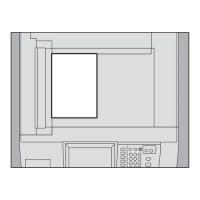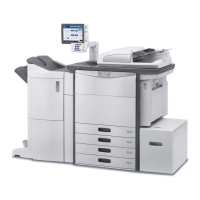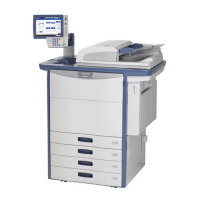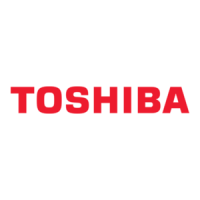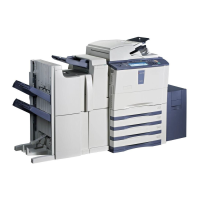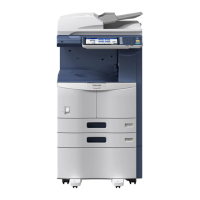e-STUDIO555/655/755/855 © 2009 - 2011 TOSHIBA TEC CORPORATION All rights reserved
DRUM/CLEANER UNIT
10 - 2
10.2 Functions
(1) Drum
It is a cylindrical aluminum base on which an organic photosensitive material (photoconductor) is
thinly applied. A photoconductor becomes insulative (high electric resistance) at dark places (out
of the light), while it becomes conductive (low electric resistance) under the light, so it is called a
photoconductor.
(2) Drum cleaning blade
It is made of polyurethane rubber. It scrapes off the residual toner on the drum surface by being
pressed against the drum with a certain pressure by the weight. You can separate the blade from
the drum by turning the cam manually in order to release the pressure.
(3) Drum recovery blade
It catches the toner scraped off by the drum cleaning blade.
(4) Recovered toner transport auger
It corrects and transfers the toner scraped off by the drum cleaning blade and caught by the drum
recovery blade. The toner is transferred to the recycle unit to be reused.
(5) Drum separation finger
It separates paper not separated from the drum on the transfer belt.
(6) Image quality sensor (S14)
It detects the adhered toner amount from the reflective rate for the test pattern formed on the
drum in order to maintain a proper image density and line width.
(7) Drum thermistor (THM5)
Since the charging amount changes depending on the temperature of the drum surface, the
drum thermistor detects the temperature of the drum surface.
(8) Drum cleaning brush
It eliminates the paper dust and extraneous substances adhering to the drum surface after the
paper has been separated. It also decreases the friction of the drum cleaning blade to lengthen
its life span, which improves the image reliability.
(9) Drum motor (M11)
It drives the drum through the timing belt, pulleys and couplings.
(10) Cleaning brush driving motor (M13)
It drives the drum cleaning brush and recovered toner transport auger through the timing belt,
pulleys and gears.
(11) Drum separation finger solenoid (SOL1)
It works only when the leading edge of the paper is passing the drum. The drum separation finger
is pressed against the drum by this solenoid and the finger separates the paper forcibly from the
drum.
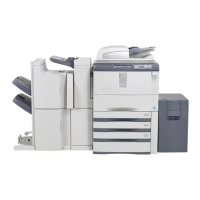
